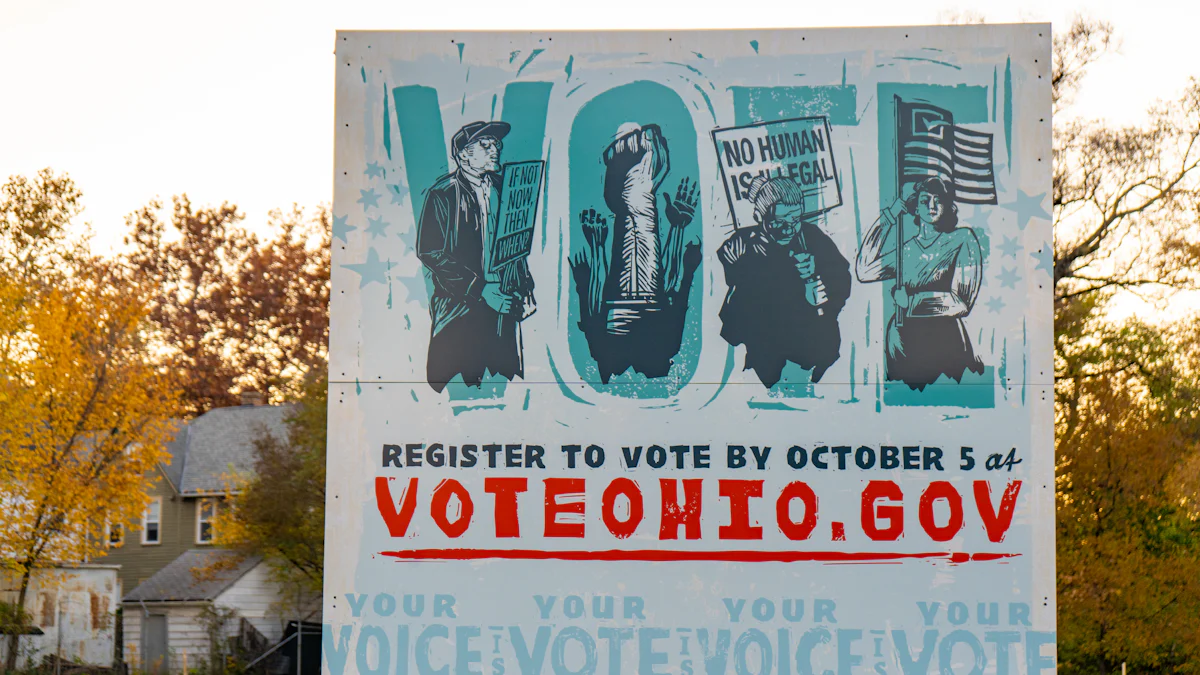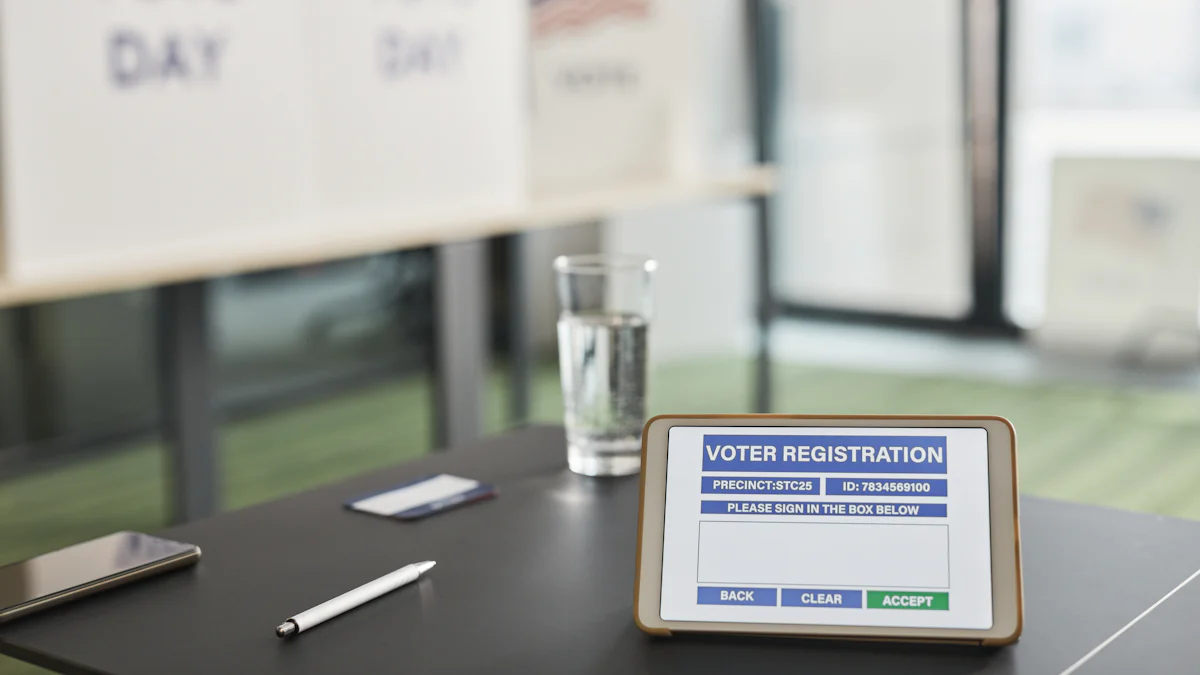
Voting in the US Presidential Election plays a crucial role in shaping the nation’s future. Every vote counts and contributes to the democratic process. You have the power to make a difference. The 2020 election saw a remarkable turnout, with 66% of eligible voters participating. This shows the importance of each voice. Understanding how to register to vote ensures you can participate. Your involvement strengthens democracy. Take action now and prepare for the upcoming election. Make sure your voice is heard.
Understanding Voter Eligibility
Who Can Register to Vote?
Age Requirements
You need to be at least 18 years old to vote in the US Presidential Election. Some states let you pre-register at 16 or 17. This means you can vote when you turn 18. Check your state’s rules to see if you can pre-register.
Citizenship Requirements
Only US citizens can register to vote. You must prove your citizenship when you register. A birth certificate or passport works for this. States have different ways to verify citizenship. Make sure you meet your state’s requirements.
Residency Requirements
You must live in the state where you plan to vote. Each state has its own residency rules. Some states require you to live there for a certain time before voting. Check with your local election office to understand your state’s rules.
Checking Your Eligibility
Online Resources
Use online tools to check if you’re eligible to vote. Websites like Vote.org help you find out. Enter your information to see if you’re registered. These sites also show your polling place and voting deadlines.
Local Election Offices
Visit your local election office to check your eligibility. The staff can help you with any questions. Bring your ID and proof of address. They will confirm if you can vote in the upcoming election.
How to Register to Vote

Online Registration
State-Specific Portals
You can register to vote online in many states. Each state has its own portal for voter registration. You should visit your state’s election website to find the right portal. The website will guide you through the registration process. You need to provide your personal information. This includes your name, address, and date of birth. Make sure all the details match your ID. You can also check your registration status on these portals.
Deadlines for Online Registration
Every state has a different deadline for online voter registration. You must register before this deadline to vote in the election. Some states close registration 30 days before the election. Others allow you to register closer to election day. Check your state’s deadline early. This gives you time to fix any issues with your registration. Missing the deadline means you cannot vote.
In-Person Registration
Where to Register
You can register to vote in person if you prefer. Visit your local election office to register. Many states also allow registration at the Department of Motor Vehicles (DMV). Some public assistance offices offer voter registration too. You should choose the location that is most convenient for you. The staff will help you complete the registration process.
Required Documentation
Bring the necessary documents when you register in person. Most states require a government-issued ID. This could be a driver’s license or a passport. You also need proof of residence. A utility bill or bank statement works for this. Make sure your documents are current and valid. This ensures a smooth registration process.
Mail-In Registration
Obtaining a Registration Form
You can register to vote by mail if you prefer. First, get a voter registration form. You can download it from your state’s election website. Some states mail forms to eligible voters automatically. You can also request a form from your local election office. Fill out the form carefully. Double-check your information before sending it.
Mailing Instructions and Deadlines
After completing the form, mail it to the address provided. Each state has its own mailing address for voter registration. Check the deadline for mail-in registration in your state. Like online registration, deadlines vary by state. Send your form well before the deadline. This ensures it arrives on time. Late forms mean you cannot vote in the election.
Special Circumstances
Military and Overseas Voters
Absentee Ballot Process
Military personnel and overseas citizens can vote using absentee ballots. This process ensures that every eligible voter can participate in the election, regardless of location. To start, you need to request an absentee ballot from your local election office. The Federal Voting Assistance Program (FVAP) provides guidance on how to register to vote and obtain these ballots. You can visit their website for detailed instructions. Once you receive the ballot, fill it out carefully. Follow the instructions provided to avoid any mistakes. After completing the ballot, mail it back to the designated address. Make sure to send it before the deadline to ensure your vote counts.
Federal Voting Assistance Program
The Federal Voting Assistance Program (FVAP) supports military and overseas voters. FVAP offers resources and assistance throughout the voting process. You can access their website for information on how to register to vote and request absentee ballots. FVAP also provides updates on voting deadlines and requirements. If you face any challenges, FVAP can help resolve them. The program aims to make voting accessible and straightforward for all service members and overseas citizens.
Voters with Disabilities
Accessible Registration Options
Voters with disabilities have several options for registering to vote. Many states offer accessible online registration portals. These portals are designed to accommodate various needs. You can also register in person at local election offices. Staff members are trained to assist voters with disabilities. Ensure you bring any necessary documentation when registering. Some states provide curbside registration for those who cannot enter the building. Check with your local election office for available options.
Assistance and Resources
Numerous resources are available to assist voters with disabilities. Organizations like the National Disability Rights Network offer guidance on how to register to vote. They provide information on accessible voting equipment and polling places. You can contact these organizations for support and advice. Local election offices also offer assistance. Staff members can answer questions and help with registration. Ensure you explore all available resources to make the voting process smooth and accessible.
Confirming Your Registration
How to Check Your Registration Status
You must confirm your voter registration to ensure participation in the election. Checking your registration status is easy and quick. You can use online verification tools or contact local election offices for assistance.
Online Verification Tools
Online verification tools provide a simple way to check your registration status. Websites like Vote.org offer these services. You just need to enter your personal information. The tool will display your registration status. You can also find your polling place and voting deadlines. Online tools help you stay informed and prepared for election day.
Contacting Local Election Offices
Local election offices offer another way to verify your registration. You can visit or call the office for assistance. Staff members are ready to help with any questions. Bring your ID and proof of address when visiting. The staff will confirm your registration status. Local election offices provide reliable information and support.
What to Do If You’re Not Registered
You might discover that you’re not registered to vote. Don’t worry. You can take steps to correct this issue. You need to act quickly to ensure your voice is heard.
Correcting Registration Errors
Errors in your registration can prevent you from voting. You should review your information carefully. If you find mistakes, contact your local election office. The staff can guide you on how to correct errors. You may need to provide updated documentation. Correcting errors ensures your registration is accurate and valid.
Re-registering Before the Deadline
If you’re not registered, you must re-register before the deadline. Each state has its own deadline for voter registration. You can register online, in person, or by mail. Make sure to follow the correct process for your state. Re-registering guarantees your ability to vote in the election. Don’t miss the opportunity to make your voice count.
You now know how to register to vote in the US Presidential Election. Each step ensures your voice gets heard. Share this knowledge with friends and family. Encourage everyone to participate in democracy. Taylor Swift inspired many fans to register and learn about candidates. You can do the same. Check your registration status today. Fix any issues before the deadline. Take action now. Make sure you are ready to vote. Your vote matters. Your involvement shapes the future.
Frequently Asked Questions
1. Who is eligible to register to vote in the US Presidential Election?
- Answer: Generally, you must be a U.S. citizen, at least 18 years old by Election Day, and meet your state’s residency requirements. Some states allow 17-year-olds to register if they turn 18 by Election Day.
2. How can I register to vote?
- Answer: You can register online, by mail, or in person. Online registration is available in most states. You can also register by filling out a voter registration form and mailing it to your local election office or by visiting your local DMV or election office.
3. What information do I need to provide when registering to vote?
- Answer: You typically need to provide your name, address, date of birth, and a form of identification like a driver’s license number or the last four digits of your Social Security number.
4. When is the deadline to register to vote?
- Answer: Voter registration deadlines vary by state. They can range from 15 to 30 days before the election. Some states offer same-day voter registration on Election Day.
5. How do I know if I’m registered to vote?
- Answer: You can check your voter registration status online through your state’s election website or by contacting your local election office.
6. Can I update my voter registration if I’ve moved or changed my name?
- Answer: Yes, you must update your voter registration with your new address or name. This can be done online, by mail, or in person.
7. What should I do if I don’t receive a voter registration card?
- Answer: If you don’t receive a voter registration card within a few weeks of registering, contact your local election office to confirm your registration.
8. Can I register to vote if I’m living abroad?
- Answer: Yes, U.S. citizens living abroad can register to vote using the Federal Post Card Application (FPCA) and vote absentee in U.S. elections.
9. What happens if I miss the voter registration deadline?
- Answer: If you miss the deadline, you may not be able to vote in the upcoming election. However, check if your state allows for same-day voter registration.
10. Can I register to vote if I have a criminal record?
- Answer: Voter eligibility for those with criminal records varies by state. Some states restore voting rights after completion of a sentence, while others may require additional steps.
11. When did women get the right to vote?
- Women to vote, was established in the United States over the course of the late 19th and early 20th centuries.
 Press Coffee
Press Coffee